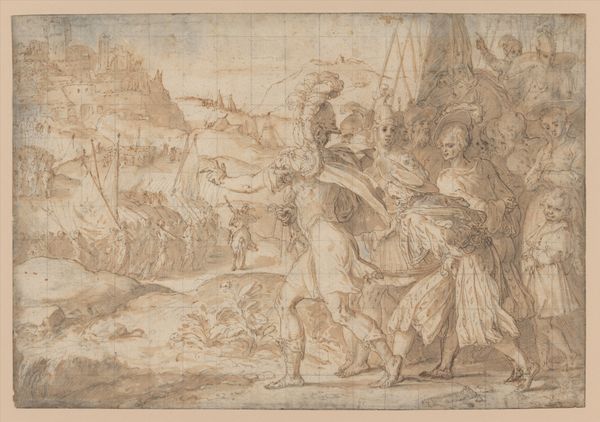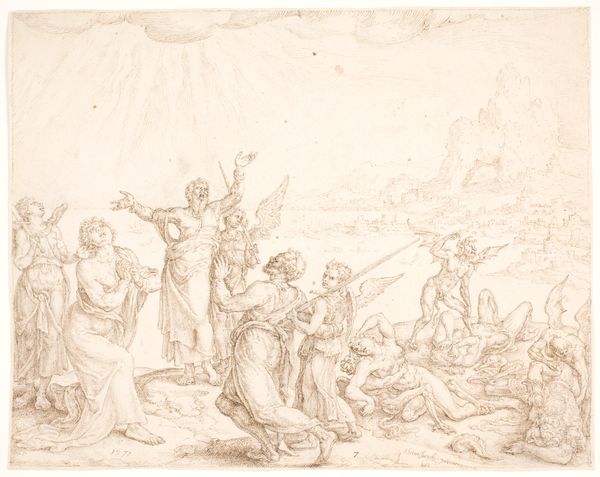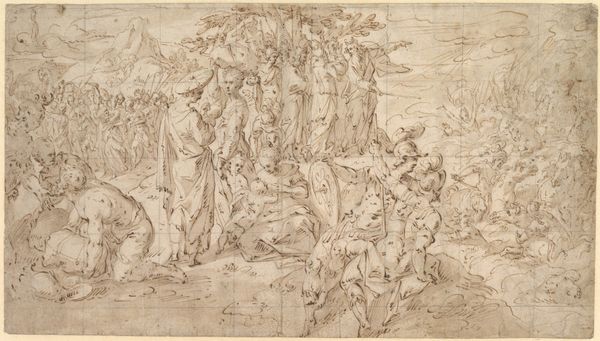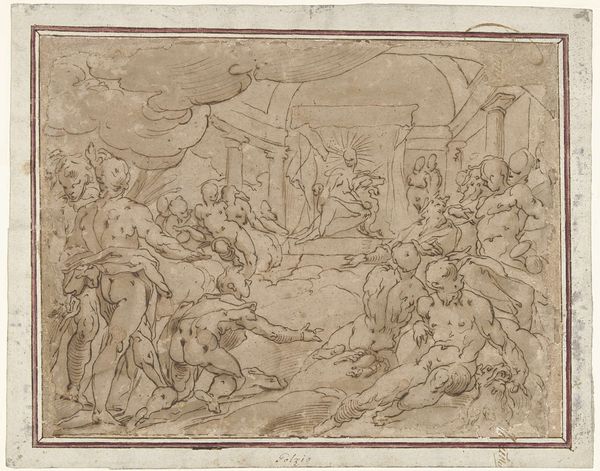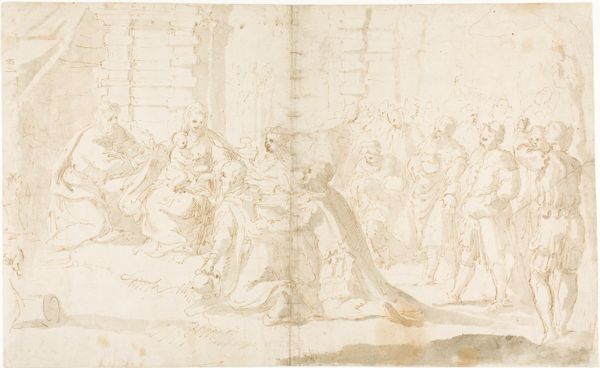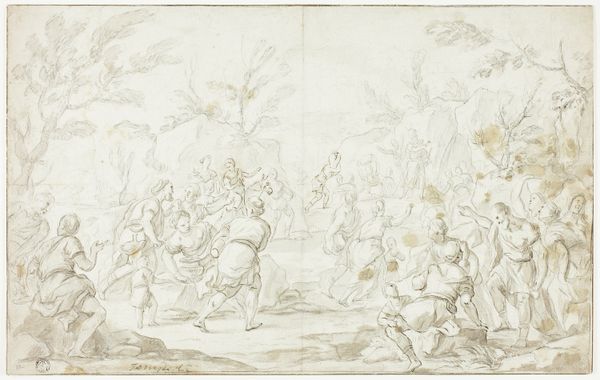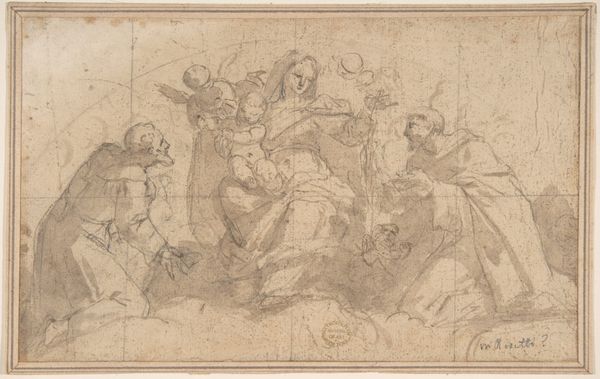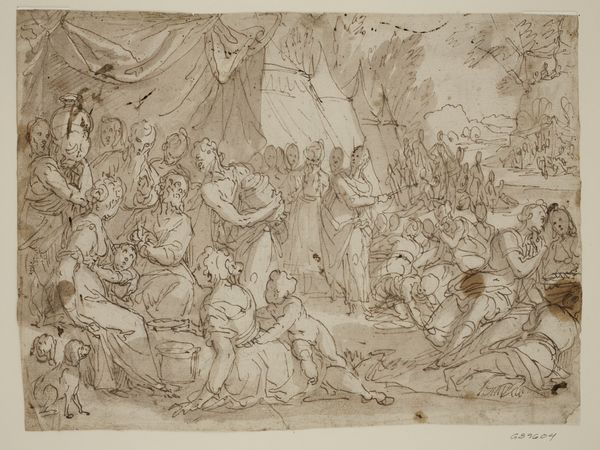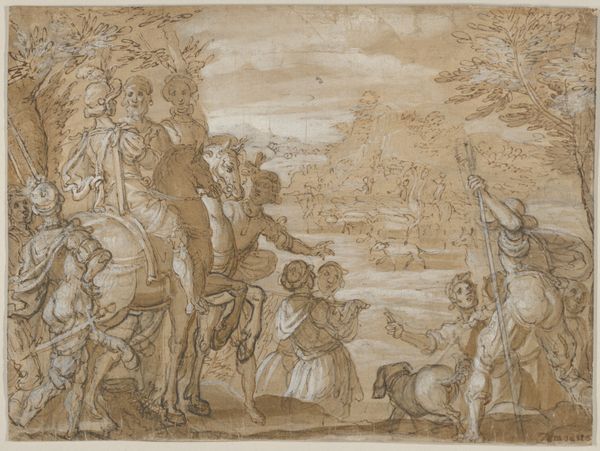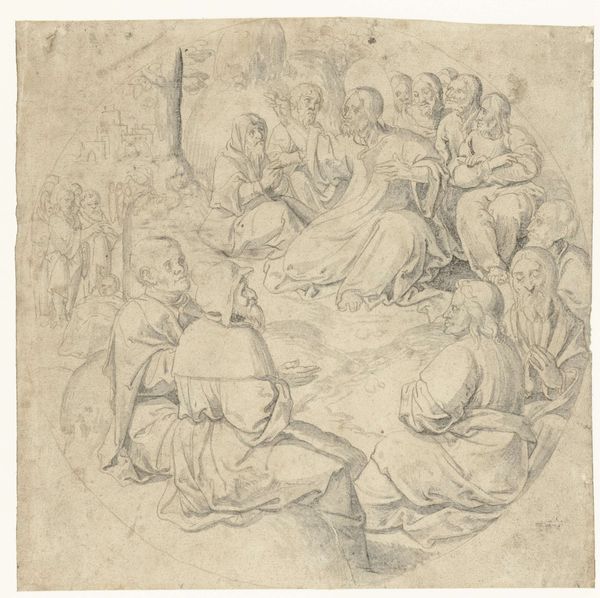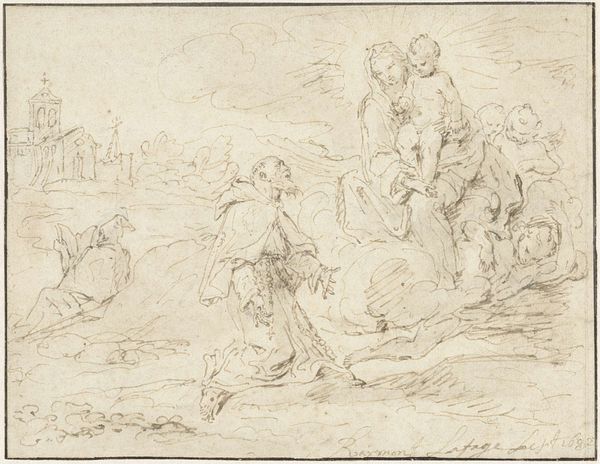
drawing, paper, ink, pencil
#
portrait
#
drawing
#
ink drawing
#
allegory
#
etching
#
mannerism
#
figuration
#
paper
#
ink
#
pencil
Dimensions: 10 1/8 x 15 7/16 in. (25.7 x 39.2 cm)
Copyright: Public Domain
Curator: This is Hendrick de Clerck's "Eurydice Bitten by a Serpent," created between 1585 and 1629. It’s a pen and brown ink drawing over black pencil on paper. Editor: It’s wonderfully light and airy. Despite depicting such a tragic scene, there's an elegance in the figures and fluidity in their poses. The composition guides the eye effortlessly. Curator: Clerck's process is quite intriguing here. Using preliminary pencil sketching allowed for adjustments to composition before the definitive ink lines, reflective of the era's emphasis on careful preparation for paintings that had to convey social rank and value for a noble or wealthy merchant commissioning work. Editor: Exactly. The artist plays with light and shadow within the delicate framework, particularly in the drapery and musculature. Semiotically, each of those swirling lines signifies motion, death, panic... even as it exists plainly as line. Curator: Beyond the purely aesthetic, consider the social implications. Hendrick de Clerck's workshop likely had numerous assistants who performed the more routine work, thereby creating artistic value through hierarchical organization—also he was the court painter. The value judgments implicit in that hierarchy extend to our understanding of "master" drawings versus studio production. Editor: But look how the line varies in weight and texture! That modulation isn’t merely about depicting form; it's also about mood. Observe how darker contours add dramatic tension, particularly around the figures expressing visible distress. Curator: The patronage system impacted even choices about medium. Ink drawings on paper were often preparatory works or designs for engravings, thus suggesting complex interactions between commerce and artistic intention; was this ultimately intended for wider distribution through print? Editor: The rhythmic groupings of figures are crucial, with each gesture seemingly linked to a unified allegorical representation of mortal loss that, via its rendering, surpasses the specific story to communicate universal pathos. Curator: Absolutely. When viewed through a materialist lens, "Eurydice Bitten by a Serpent" reveals intricate networks of workshop practice, patronage dynamics, and early market forces— all elements integral to constructing the aesthetic qualities we experience now. Editor: Indeed, each line sings its part within a cohesive chorus, enhancing the tragic yet sublime narrative woven together. Curator: Considering Clerck’s "Eurydice" has allowed us to view the artist’s choices as functions of his working reality. Editor: And how skillfully it has allowed us to see that narrative embodied in elegant, refined shapes.
Comments
No comments
Be the first to comment and join the conversation on the ultimate creative platform.
